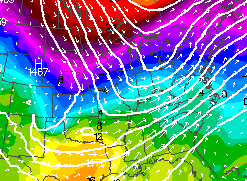
| WX MODEL 3: Cold Air Plunge
| |||||||||||||||||||||||||||||||||||||||||||||||||||||||||||||||||||||||||||||||||||||||||||||||||||||||||||||||||||||||||||||||||||||||||||||||||||||||||||||||||||||||||||||||||||||||||||||||||||||||||||||||||||||||||||||||||||||||||||||||||||||||||||||||||||||||||||||||||||||||||||||||||||||||||||||||||||||||||||||||||||||||||||||||||||||||||||||||||||||||||||||||||||||||||||||||||||||||||||||||||||||||||||||||||||||||||||||||||||||||||||||||||||||||||||||||||||||||||||||||||||||||||||||||||||||||||||||||||||||||||||||||||||||||||||||||||||||||||||||||||||||||||||||||||||||||||||||||||||||||||||||||||||||||||||||||||||||||||||||||||||||||||
METEOROLOGIST JEFF HABY
The northern regions of Canada are notorious for the very cold continental air masses that build in the winter. When the jet stream
pattern becomes conducive, this very cold air can rush down toward the south and southeast. The boundary of this very cold air mass
is a cold front. The passage of these fronts brings a dramatic change in weather. The cold air can plunge through the United States
and into the northern boundary of the tropical region. These cold air plunges can bring very cold air, very dry air and snow
in some cases.
The image below is a 850-mb temperature model of a cold air plunge taking place. The coldest air is located over central Canada and the
north central portions of the U.S. Wind vectors show the direction that the air is moving. Behind the cold air is a dramatic temperature
drop and winds flowing from the north. The regions with warmer air (Texas and southeast U.S.) will experience dramatically cooler
weather as this air plunges southward.

|
|
|

